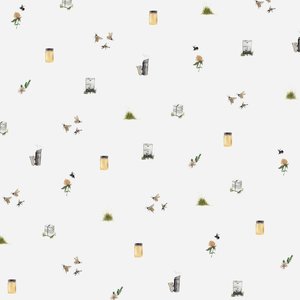HAPPY GARDEN, HAPPY BEES
GAIN SOME POINTS FROM MOTHER NATURE AND HELP YOUR HARVEST FLOURISH BY CREATING A BEE FRIENDLY GARDEN.
Spring has sprung and everything is looking especially bright and fruitful this season at Apiary Made headquarters. Our native gums are flowering nicely, which is bringing the hum of happy bees to our ears. Such a promising season has me thinking, what more could we do in our own backyards to keep bees happy? A bee friendly garden is one way to do this not just in Spring, but all year round.
Even a domestic garden can have a positive impact in terms of supporting bee populations.
By simply planning your garden with bees in mind, you can do your part in helping bees to feed and flourish. Therefore contributing to a greater bee-friendly ecology and assisting in combating the world’s declining bee population. If you have fruits and vegetables, encouraging bees into your garden will also benefit your harvest enormously. Bees are active pollinators and will help your veggies reach their peak.
Bees are much like humans: what they need for basic survival is food, water, a safe space and protection from threats.
Unfortunately, threats to bees come in many forms, especially to Australian native bees. Significant threats include pesticides that contaminate the bee’s food, the destruction of their natural habitats including a decrease in flowering areas due to urbanisation, as well as biosecurity threats from alien pests and diseases.
SO, WHAT CAN YOU DO TO HELP IN YOUR OWN GARDEN?
Avoid using pesticides:
Once used on plants, pesticides will contaminate the pollen and nectar of the plant and killing the bees when they go to feed.
Make sure your garden is blooming all year round:
It is very important to let your plants go to seed, allowing them to flower, thus allowing the bees to feed on the pollen. Bees require flowers all year, so when planning your planting, ensure you pick a selection of species that will flower in different seasons. This will ensure a bee friendly garden.
Plant attractive plants:
A simple tip is to plant plants that produce high quality pollen and nectar, thus attracting bees. You should try food based plants i.e. herbs, vegetables, berries, shrubs and fruit trees. My bees especially love the rocket that grows in my front garden. You can plant herbs such as Lavender, Lemon balm, Oregano, Peppermint, Marjoram, Garden Sage, Thyme, Borage, Winter Savory, Celosia, Coriander, Basil and Nemesia. Shrubs bees love include Grevillea montis-cole, Flowering currants, Rasberry, Bluebuerry, Gungarra, Hairpin Banksia, Pincushion hakea, Passionfruit, Guava, Macadamia, Carambola and Banana. Some tree species that work include Portugal Laurel, Lemon, Apple, Large-fruited yellow gum, Red cap gum, Hickson, Mandarin, Plum, Persimmon, Lemon scented myrtle, Lie, Avocado and Bee bee tree.
Mix species:
Just like us, bees have different tastes so including a mix of native Australian flowers and exotic species will ensure your garden caters for all kinds of bees.
Provide a water source:
Help your bees stay hydrated and provide them a source of water. This could simply be a bird bath- just ensure the bath is deep enough the water doesn’t stagnate and breed mosquitoes but shallow enough that the bees cannot drown. A simple way to combat this is to fill your birdbath with some pebbles or stones.
Something for the whole family:
Support homeless bees and make a bee hotel:
Provide bees with safe habitats by creating a man-made bee nesting site that can act as a shelter for bees. This will help those whose homes have been destroyed. Use non-treated wood and try shelter it from the weather.
All these little steps can make a huge difference in achieving a healthy habitat in your own backyard. If you want to go one step further and acquire your own hives, there is plenty of advice out there online and a great beekeeping community just waiting for you to join. In the meantime, happy planting!
xo Celeste





